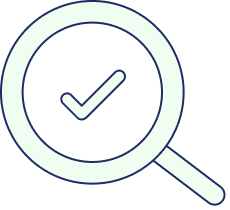During your baby's first few months of life (0-3 months or newborn stage), you will probably notice different coloured poo in their nappy, including yellow, green and even streaks of blood. This may be frightening to see, but it is relatively common in babies and is usually not a sign of a serious problem.
Blood in Poo

Blood in Poo
& CMPA
Why does my baby have blood in their poo/stool?
Straining when passing a hard poo/stool, for example, can cause small tears in the area around the bottom, also called anal fissures, which can result in blood streaks in your baby’s nappy.
Could it be Cow’s Milk Protein Allergy?
Blood loss or blood streaks in your baby’s nappy can result from irritation in the gut and can be associated with CMPA. However, babies with CMPA usually experience more than just one symptom and these symptoms can be very different from one baby to the next. Therefore it is always best to discuss it with your baby’s doctor/GP. They will look at the symptoms in detail and often use a symptom scoring system to decide if it is related to CMPA.
Keep a diary of when your baby feeds and of any symptoms that occur during or after feeding. Be sure to note down the time e.g., in minutes, hours or days, and when the symptom/s happened.
If your baby is breastfed, then mum should also record everything she is eating and drinking, as well as timings of symptoms after feeding. It’s a good idea to keep this diary for at least 1 week before seeing your doctor/GP.
What to Do Next?
If you are worried that your baby has symptoms related to cow's milk, you should seek advice from your doctor/GP. Whilst you are preparing to visit your doctor/GP, it can be a good idea to record your baby's symptoms over a few days.

PREPARE
FOR THE VISIT
Understand more about the steps towards
a possible diagnosis of CMPA
Overview of Symptoms
DIGESTIVE
Up to 34% of infants with CMPA have digestive symptoms
RESPIRATORY
Up to 30% of infants with CMPA have respiratory symptoms
ANAPHYLAXIS
Anaphylactic shock is a severe, immediate, allergic reaction, which can affect many parts of the body
SKIN
Up to 75% of infants with CMPA can have skin-related symptoms

